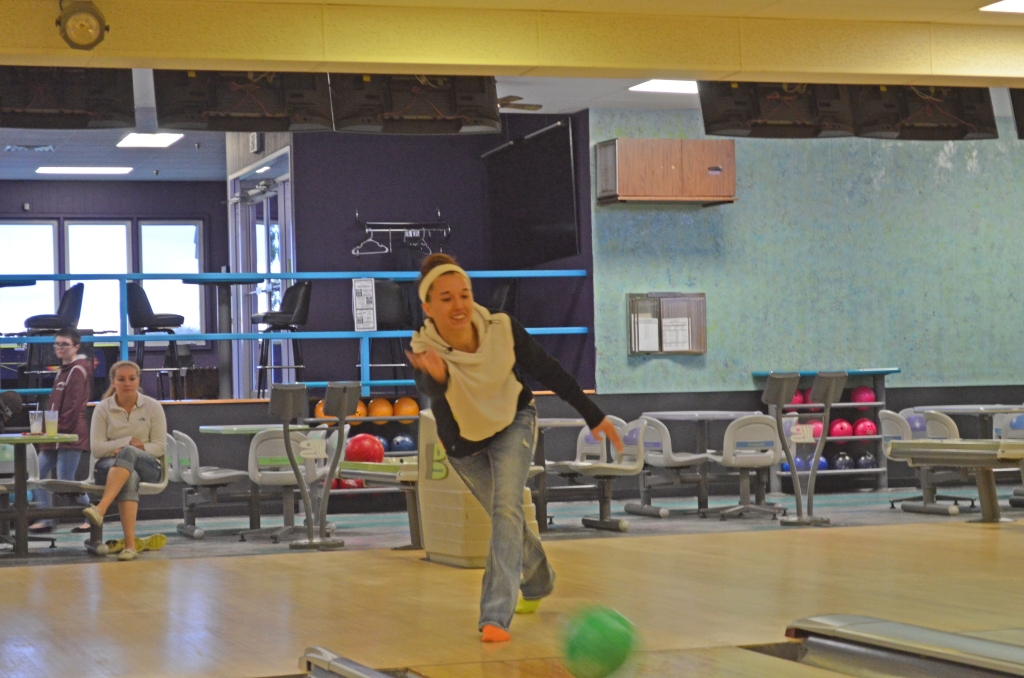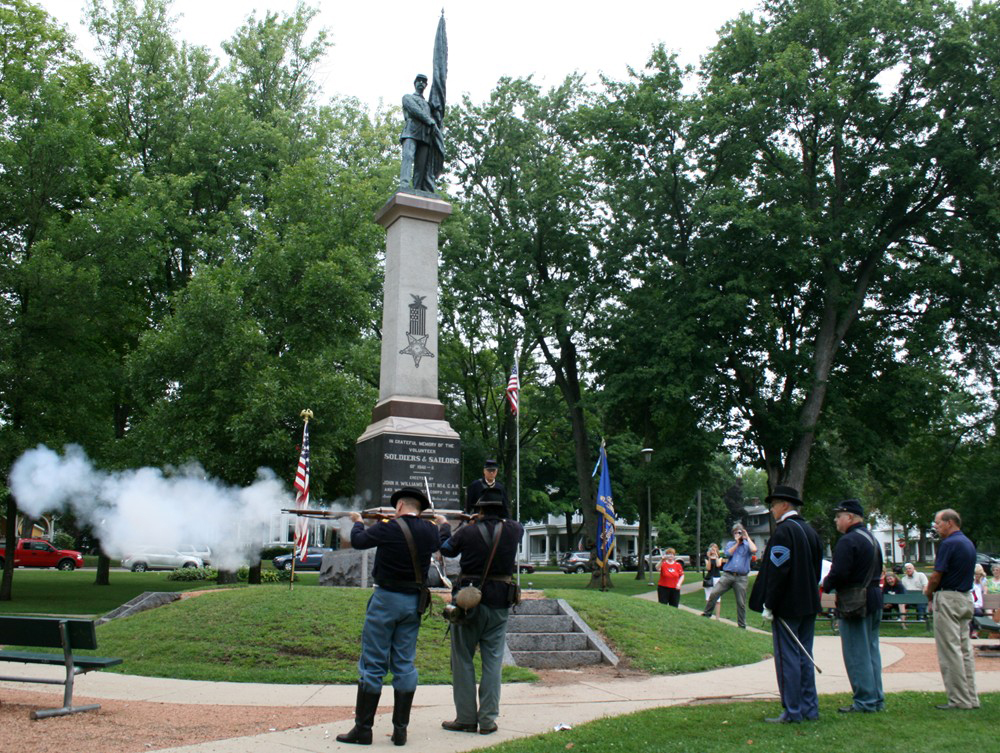Local Seamstress and Thrasher board member Karla Spinks smiles as she installs the scale model of the Thrasher Opera House’s curtain in the newly renovated bar. Connor Cummiskey photo
Thrasher Opera House bar is replica of theater area
by Connor Cummiskey
When visitors enter the lobby during intermission at the Thrasher Opera House, they may experience Deja vu.
That is because the bar now is an exact 1/6 scale replica of the stage they had just been viewing.
The bar is the most prominent of the recent set of renovations to the lobby of the Thrasher Opera House. It is complete with fully functional velvet curtains, which are colored the same deep shade of red as the originals.
This renovation was inspired by the contrast between the more modern office building that houses the lobby and the more than 100-year-old opera house.
“We value that historic authenticity, and this office building is obviously not of that same vintage and we wanted to tie it in with the historic opera house,” said Maria Dietrich, development director for Thrasher Opera House.
Along with changes to the building itself, the opera house opened the door that connects the two buildings to allow for a greater flow of patrons between the performance space and the lobby.
Also included in the renovation is an expansion to the art gallery that is displayed in the lobby.
By removing an extra office space, Thrasher opened up the lobby to hold a larger collection of art that rotates every few months.
“We look at it as expanding the palette of arts’ offering for our visitors enjoyment,” Dietrich said.
A less flashy, but equally important, piece of renovation is the cleaning and refurbishment of two bathrooms located just off of the lobby.
Along with the overall idea of tying the lobby to the historic nature of the opera house, the bathrooms now have emulated wainscoting similar to that of the main performance area; though patrons will probably be more appreciative of the shorter lines during intermission.
Probably the greatest aspect of the renovation, however, is simply the added space for visitors to socialize.
“If patrons want to mingle they have always managed it but for over 10 years they have been contained to the opera house. Over the last few years it has been a real treat for them to spill over into here and visit with each other,” Dietrich said.
One way the expansion to the lobby has already helped was the scheduling of a lecture by Ripon College professor Kurt Dietrich about jazz music in Wisconsin. This took place just prior to a performance by Wisconsin jazz artist Ike Sturm, a bass player in the “Ike Sturm Ensemble”.
“Patrons who attended the college lecture got the jazz in Wisconsin pre-concert talk, and then most of them stayed and went to the concert,” Dietrich said. “So it was a cool, collaborative evening.”
The renovation has more purposes than creating a more enjoyable experience for patrons. The increased space has lead to greater flexibility to raise money for keeping the opera house running.
While ticket sales do help in paying for the cost of running the business side of the opera house, they only cover about 40 percent of what is needed to keep Thrasher Opera House open. As a result, alternative funding is a constant necessity.
“One of the ways we can earn more income is by renting our space out,” Dietrich said. “We rent out the opera house for wedding receptions for example.”
Calling the opera house office at 920-294-4279 is the best way to schedule an event either in the lobby, the opera house or both.
With the necessity of finding creative ways to fund the operations of the opera house, it does raise the question of how the new renovation was paid for.
Most of the money was raised during Thrasher’s 2012 fund-raising gala, which was titled “The British Invasion.”
It was primarily focused around the Beatles.
This year’s gala on Saturday, Sept. 20 is themed, “Happy Days.”








